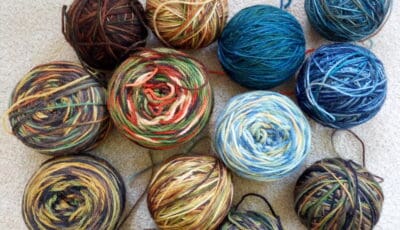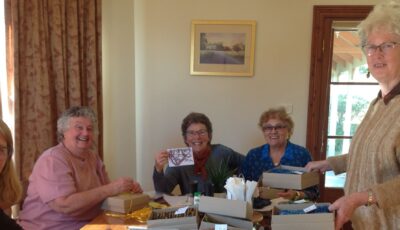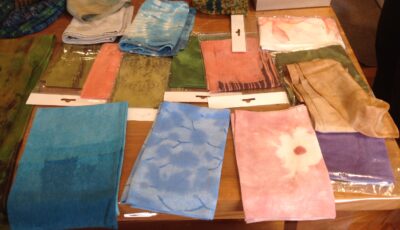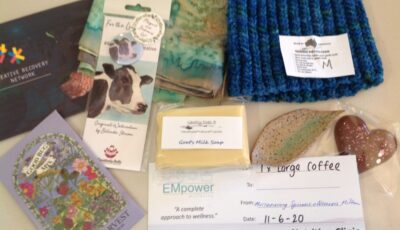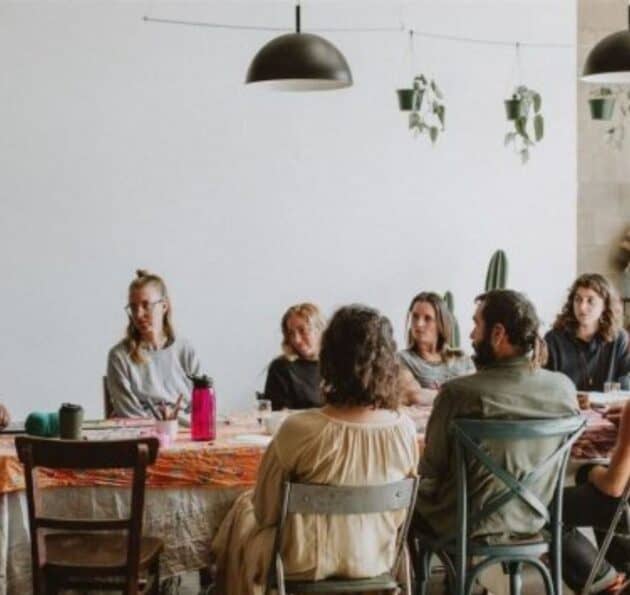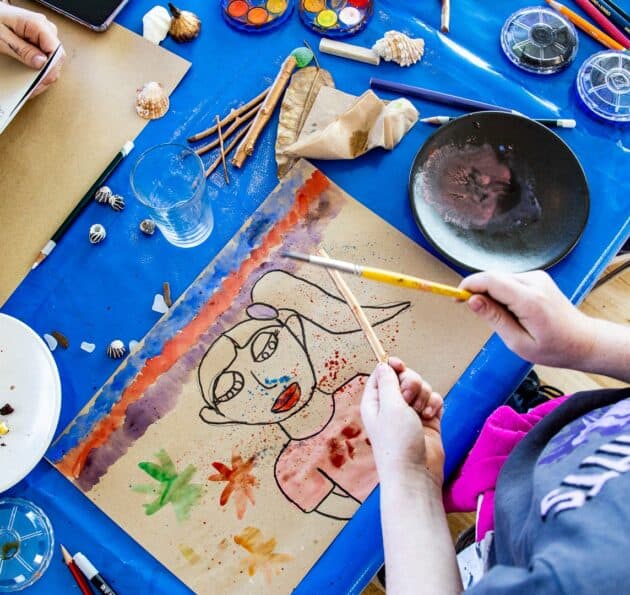Case studies
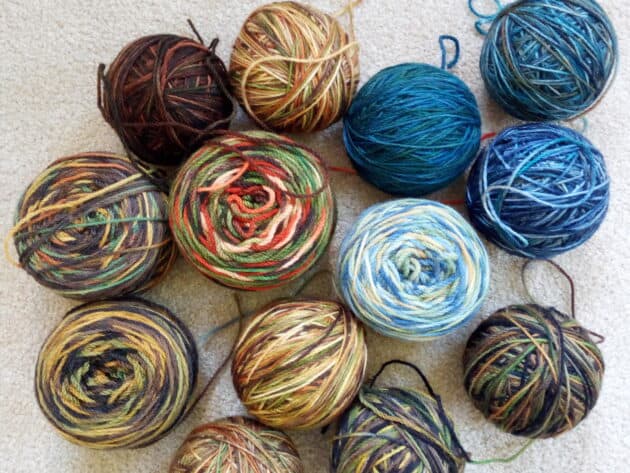

Murramarang Love Boxes
Spinning and weaving of kindness in recovery
Like many who witnessed the impact of Australia’s 2019-20 Black Summer bushfires, Vivien Davidson wanted to find a way to express her solidarity and connect with the people in her community who were hardest hit. The Currowan fire on the South Coast of New South Wales, she recalls, was “the most devastating thing that our community has ever experienced, both at the personal level, the ecological level and economically… It started in late November, about eleven kilometres from our place. It then spread out over two months right across the Shoalhaven area, burning out five hundred thousand hectares of countryside… We were in shock but we were also stressed because it really did feel like this monster was stalking us continually.” Her property was repeatedly threatened as the fires came and went. The ever-changing weather conditions wiped out towns and spared others.
While Vivien had retired, she says her background as a social worker, psychotherapist and trauma therapist meant that “part of me just clicked on in this fire season… my head was spinning with all these different thoughts about ‘how can we help each other as a community, and just get through all of this, including the aftermath?’” Given her artistic interests and network, Vivien also wondered how creativity and art might play a role. In searching for possibilities, she encountered the Creative Recovery Network’s Love Box project, which offered small but powerful ways to nurture people with care packages. Adapting the idea for her local context, she rallied a group of volunteers to make Love Boxes for the bushfire affected residents in the New South Wales district of Milton-Ulladulla.
Vivien belonged to the Murramarang Spinners and Weavers, a skilled group of spinners, weavers, knitters, felters, dyers, potters and watercolour artists. Together they harnessed the goodwill and creativity of their community for acts of kindness and connection. As Vivien explains, they only wanted handmade and special items in the Love Boxes, “things that are worth treasuring, so that we could show people that we actually respect and care for them by giving something that is worth keeping, that has some value to it and that expresses our love.” Instead of asking for donations to cover costs, a government grant for community groups in recovery contexts was secured, enabling them to also pay local suppliers for some of the contents. Inside the Love Boxes were hand crafted items like beanies, dyed silk scarves, ceramic leaf trays and also things like coffee vouchers for local brewers, packets of ‘green harvest’ bird-attracting flower seeds, locally made soaps and chocolate, and more. Personal notes of support and solidarity were sent on cards painted by local artists.
The Love Boxes were intended as a morale booster for those rebuilding their lives and as a lasting reminder that they were not forgotten by their community. Evidencing the thoughtfulness involved, the gift boxes were distributed at the beginning of winter. Knowing the emergency support services that had helped people survive the initial disaster would have largely evaporated, they surmised that many people would be struggling. “And that turned out to be a very important thing to do,” says Vivien. “We had several months to get it all together, and then, of course, Covid hit.” In spite of lockdowns, volunteer knitters were recruited from across the community. “There was a whole army, really, of elderly ladies,” says Vivien. “We’d parcel up some balls of yarn and ring people up and say we’re going to drop it at your gate on a certain day, and they would come out and pick it up some time, and then we’d come back and pick it up from their front gate two weeks later.” Many of the volunteers appreciated the opportunity to contribute and “do something creative during a difficult time of lockdown.” For people the volunteer team knew, each Love Box was personalised. For other community members, the ongoing community mental health team and the Conjola Recovery Group delivered them where they identified need.
“We were kind of amazed at the feedback,” says Vivien. While the team underestimated the impact, they were pleased that “we were able to do our one small thing to just relieve some of the stress in our community.” In a thank you letter, one of the recipients wrote: “Upon receiving and opening the box early one evening, I was in awe of what was inside. I picked out each item and felt so much love through everything I touched… I will never forget the feelings that came over me that night. My heart was full.” Another writes, “We were overwhelmed by the gesture… One of the bright spots after the bushfires for us has been the care and support that we’ve received from the local community and we’ve very much appreciated this. It has been so important to us as we’ve come to terms with the aftermath of the fires and start rebuilding our lives.” Pointing to the power of small, sincere projects like Love Boxes, Vivienne reflects, “Even though I’ve dealt with trauma at the professional end, one of the things that I really know and am very convinced of is how much a caring community can really make a difference to people’s ability to recover from trauma and disaster.”
Related Case Studies
SUBMIT YOUR CASE STUDY

